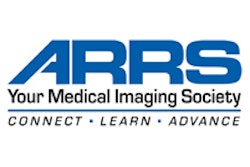
Current online patient education materials for breast biopsy may be of limited utility due to patient literacy issues, according to research presented at the American Roentgen Ray Society (ARRS) annual meeting in Honolulu, Hawaii.
In her presentation, Dr. Natasha Kaur from Loma Linda University Medical Center in California found that patient education materials exceed recommended readability levels, making it potentially difficult for patients undergoing breast biopsy to understand.
"As the life expectancy of the average American increases and the need for breast biopsies grows, it is important to evaluate patient literacy health information to ensure that they are understood by the majority of patients," Kaur said.
Reports have shown that over 70% of Americans use the internet for health information. However, a report by the U.S. Department of Education suggests that over half of Americans between the ages of 16 and 74 read below the equivalent of a sixth-grade level. Kaur also noted that about 40% of Medicare recipients read at or below a fifth-grade level.
The U.S. National Institutes of Health recommends that health material be written at a sixth- or seventh-grade level. Kaur and colleagues wanted to find out whether patient-facing online literature on breast biopsy is accessible to improve patient knowledge. Ultimately, it wanted to raise awareness of the literacy levels of women who undergo breast biopsies.
The researchers used four different readability formulas for their study: Flesch Reading Ease, Gunning Fog, Flesch Kincaid, and Simple Measure of Gobbledygook (SMOG). Using a Google search on "breast biopsy" and readability software, they evaluated 40 websites and assessed scores from these formulas to determine readability.
The team found that all articles evaluated were scored as being above sixth-grade level. Additionally, the average grade level for the articles as assessed by the Flesch Kincaid formula was 10.6.
The researchers also found that the readability of online patient education materials exceeded the recommended reading level by an average of 4.6 grade levels (p < 0.001). In other words, patients at the average sixth-grade level are reading material written at a 10th- or 11th-grade level. Also, readability of the articles exceeded the eighth-grade level by an average of 2.6 grade levels (p < 0.001).
Kaur said that while physicians don't necessarily need to evaluate the readability level of online educational materials, they should be aware of the increased usage of online resources by patients and tailor communication with patients accordingly. She added that while she is interested in developing a method to explain biopsies at a sixth-grade level, a quality improvement project and formal research project need to be completed first. The research presented at ARRS will be a springboard for these efforts.
"This is not only applicable to breast biopsies, but is also generalized to other procedures," she added.




















